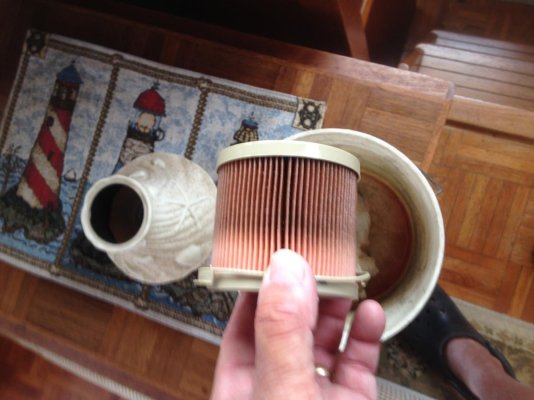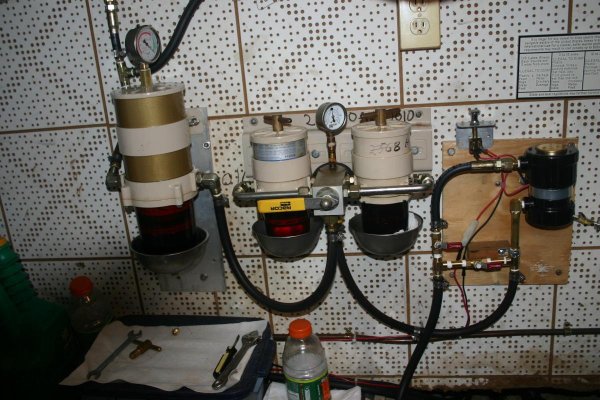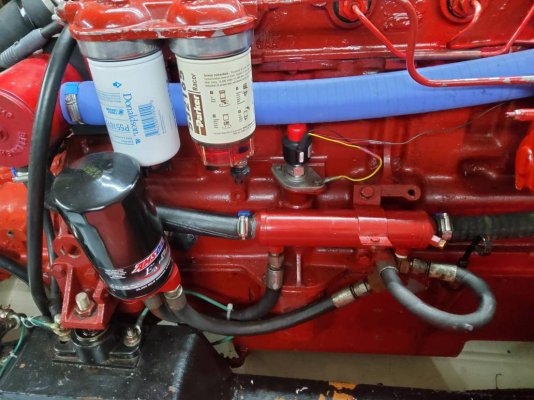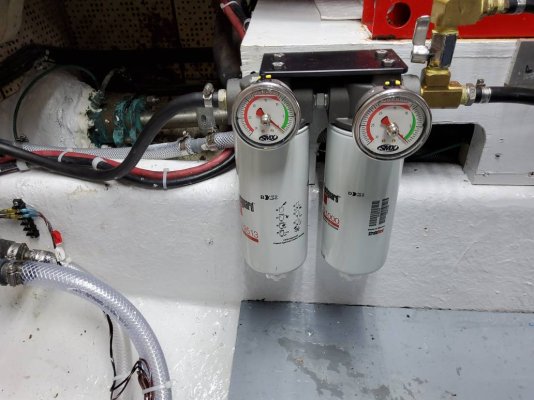I was sitting in the engine room ready to change Racors and secondary fuel filters and I started thinking maybe I don't need to change them yet on 3208TAs. Last season we only cruised for about 100 hrs last season. The vacuum gauges on the Racors is half way to the yellow section (if that).
What is the experience and recommendations of this forum on that subject?
Manual recommends changing the filters every 200-300hrs or yearly. I was told that the yearly recommendations is a CYA statement.
I never skimp or miss changing oil filters and oil in all vehicles and boats. But in our diesel motorcoah, I may go 18months between fuel filter changes.
I would very much appreciate any input and experiences from the group.
Thank you in advance.
Streff
What is the experience and recommendations of this forum on that subject?
Manual recommends changing the filters every 200-300hrs or yearly. I was told that the yearly recommendations is a CYA statement.
I never skimp or miss changing oil filters and oil in all vehicles and boats. But in our diesel motorcoah, I may go 18months between fuel filter changes.
I would very much appreciate any input and experiences from the group.
Thank you in advance.
Streff




